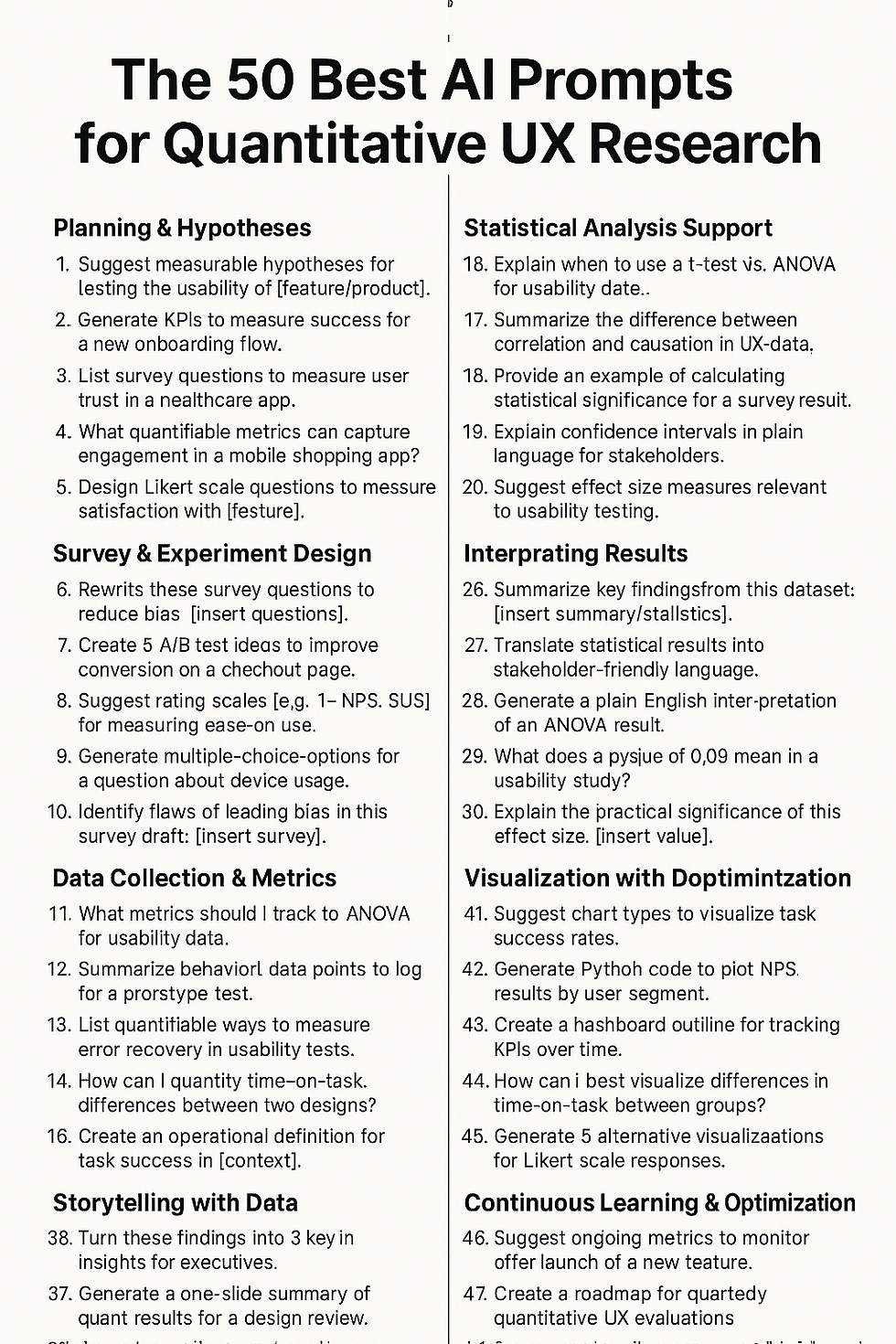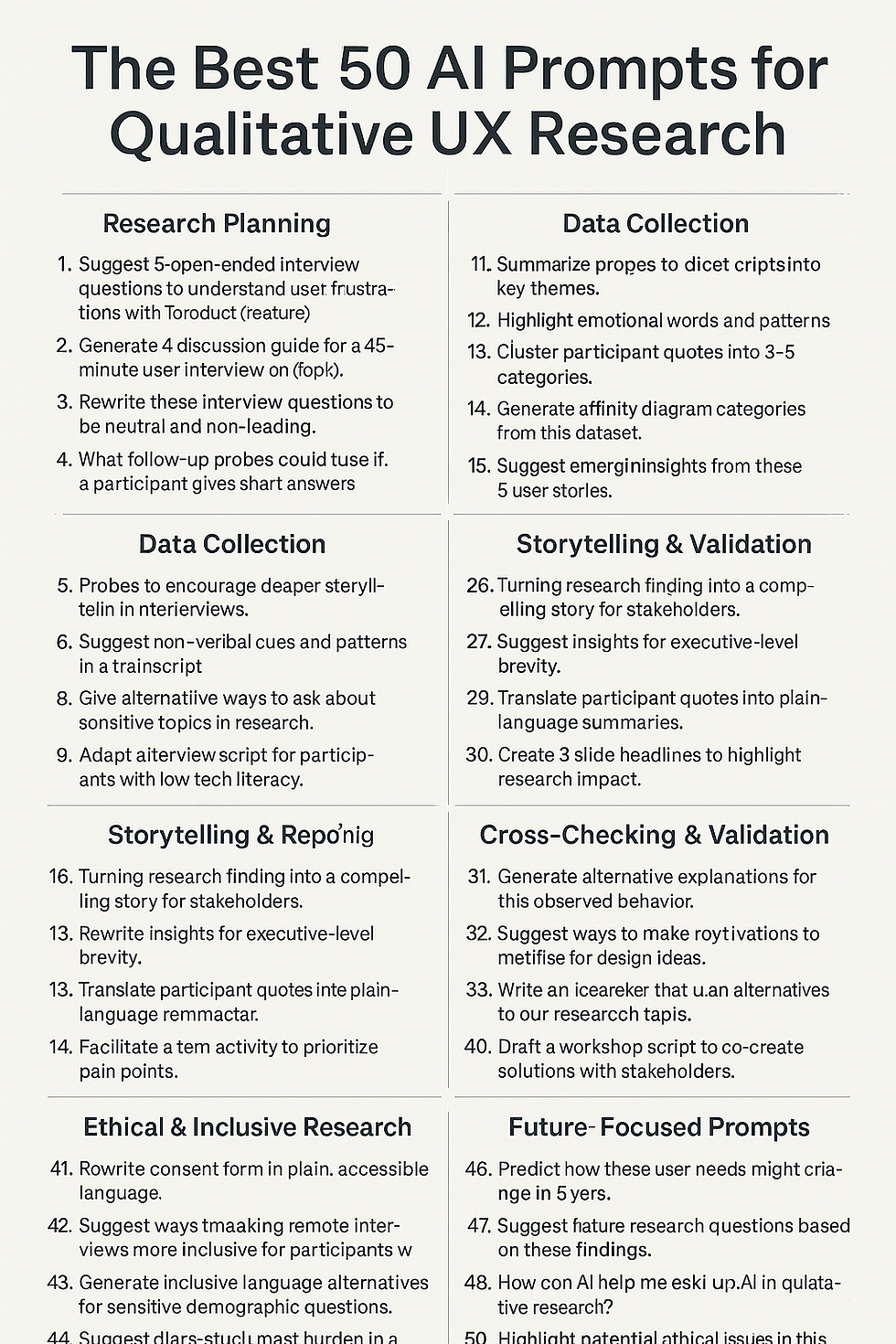From Tactics to Strategy: Elevating UX Research Beyond Usability Testing
- Philip Burgess
- Sep 23
- 2 min read
Updated: Oct 25
By Philip Burgess - UX Research Leader
For many organizations, UX research is synonymous with usability testing. It’s the familiar, tactical method: put a prototype in front of users, observe their struggles, and fix obvious issues. While useful, this narrow focus misses the strategic potential of UX research—to shape product direction, align stakeholders, and reduce risk long before designs hit the screen.
It’s time to shift from UX Research Tactics to Strategy
Why Staying Tactical Holds Teams Back
Reactive, not proactive: Research only enters the picture when designs are nearly finished.
Missed opportunities: Foundational questions about user needs, behaviors, and market fit go unanswered.
Limited influence: Researchers become usability testers instead of strategic partners in decision-making.
What Strategic UX Research Looks Like
1. Anchored in Business Objectives
Strategic research begins with clarity: What are the outcomes we want to achieve? Whether it’s reducing churn, improving acquisition, or increasing task completion, research aligns to measurable business and user goals.
2. Portfolio Approach to Methods
Usability testing is just one tool. Strategic researchers build a balanced portfolio:
Foundational Research: Ethnography, field studies, and diary studies uncover unmet needs.
Generative Research: Journey mapping, card sorting, and surveys inform design direction.
Evaluative Research: Usability tests and A/B experiments validate effectiveness.
Measurement & Tracking: Analytics, CSAT, and NPS monitor outcomes over time.
3. Influence Through Storytelling
Data alone doesn’t shift roadmaps—stories do. Strategic researchers translate findings into compelling narratives that connect user pain points to business opportunities, making insights actionable and memorable.
4. ResearchOps as an Enabler
Playbooks, repositories, and governance aren’t admin work—they are strategic multipliers. They scale research, maintain rigor, and free researchers to focus on higher-value work.
5. Partnering with Leadership
The most impactful researchers work as thought partners to executives, product managers, and designers. They don’t just answer research questions; they help shape the questions worth asking.

Best Practices for Making the Shift From UX Research Tactics to Strategy
Ask better framing questions: Move from “Does this design work?” to “What problem are we solving, and for whom?”
Connect insights to KPIs: Translate findings into impact metrics leadership already tracks.
Build a research roadmap: Show how multiple studies ladder up to a long-term vision.
Educate and empower: Help non-researchers understand methods and when to use them responsibly.
Measure your own impact: Track research influence on business outcomes, not just design changes.
Resources to Explore
Nielsen Norman Group – Strategic UX Research
MeasuringU – ROI of UX Research
Rosenfeld Media – Think Like a UX Researcher
ResearchOps Community
Final Thought
Tactical usability testing ensures your designs work. Strategic UX research ensures your products matter. By moving upstream—informing product strategy, shaping decisions, and aligning with business outcomes—UX researchers can elevate their role from testers to true strategic partners.
✨ Usability testing finds friction. Strategy finds opportunity.
Philip Burgess | philipburgess.net | phil@philipburgess.net




Comments